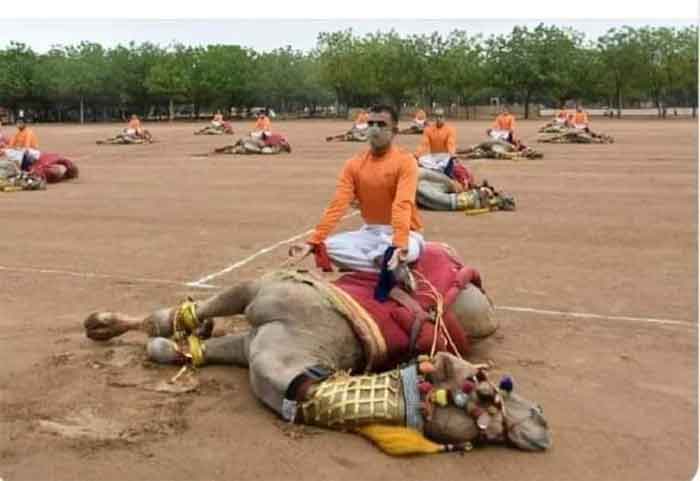
It is World Camel Day on June 22. It is sheer accident that World Yoga Day, June 21, is not also World Camel Day – in December 2014, the United Nations accepted a resolution marking June 21 each year as Yoga Day; in 2009, a researcher in Pakistan, finding that the camel played an important role in the desert region but had nothing special to commemorate it, first suggested that June 21 – the day of the summer solstice in the Northern Hemisphere – be observed as Camel Day. Finding that the same day was also observed as Father’s Day, however, he settled on June 22 as Camel Day.
On June 22, 2022, some people on Twitter were outraged to see camels lying flat on desert sand, with riders performing yoga on the animals, with their legs tied. It was Yoga Day on June 21, and men of the Border Security Force were doing their yoga regimen atop their animals. News reports later showed that about Rs32 crore had been spent on organizing Yoga Day by the Government of India.
The camel, however, has no such devoted expenditure by the Government of India. Even 20 years ago, camels were much in demand as camel carts were used in transport through desert sands. With road infrastructure now available in the desert region too, few people still rely on camels for transport. They are not used as much even in agriculture. Camel herders are hard-pressed to find buyers for camel milk, which is the one source of making a living from their animals. The Raika herders of Rajasthan continue to graze their animals, and one camel dairy in Pali district – Camel Charisma – buys milk from local herders which is refrigerated and sent across the country.
There is high demand for camel milk from parents of children with autism. There are also patients of cancer, diabetes and conditions affecting the immune system who seek out camel milk, for its unique properties. Even so, there is very little government support to traditional camel herders.
Given the unique properties of camel milk, which is low in fat and contains also Vitamin C, rarely found in animal milk, there is need for more research on the value of this milk as therapy. Rajasthan, with its high rates of child malnutrition, could benefit from introducing camel milk in midday meal programme in districts where camel herders could be drawn into such provisioning.
The pity, though, is that solutions that might offer a benefit to the camel herders as well as poor families where children are malnourished do not feature very prominently in public discourse. Also, solutions to most policy issues are sought from richer, western nations, whereas it might be fruitful, in this instance, to study government measures to support local producers in Nepal, for instance, where special planning is underway to offer assured markets to yak dairy products.
What is needed, for World Camel Day and World Yoga Day to both be observed in spirit is additional spending on camel dairy products, and more regular practice of yoga that does not necessitate large budget spend on just one day of the year.
Rosamma Thomas is a freelance journalist










































